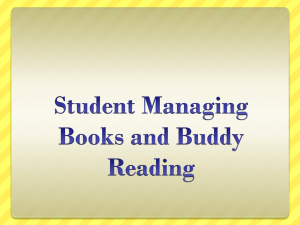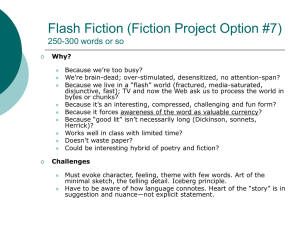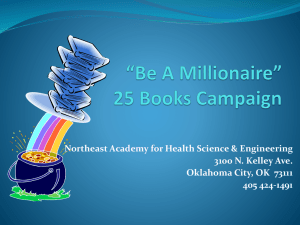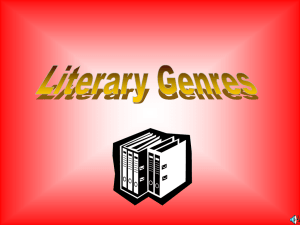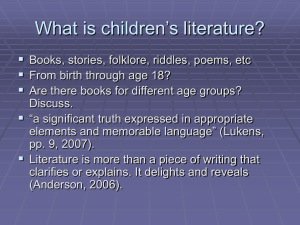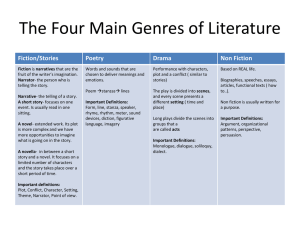Chapter 9- literature based reading programs
advertisement
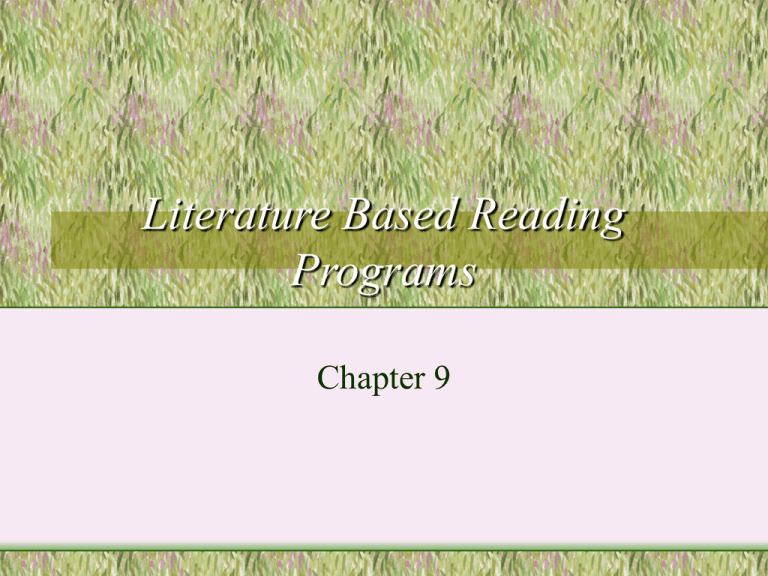
Literature Based Reading Programs Chapter 9 Reading skills • Are identified in the basal program • Literature selections that reinforce these skills are assigned. Critical thinking is reinforced by mystery stories. (Miss Nelson is Missing, Encyclopedia Brown stories) • Two goals of Literature Based Reading – Emphasis on meaning – Appreciation of language Core Literature • Used for whole group instruction, discussion, and writing topics. • Extended literature- assigned to individuals or small groups as a supplement. – Recreational reading – Uses whole pieces rather than anthologies. – Independent reading of individual choices neglects guided reading which makes students expert readers. Reader motivation • Teacher must understand the student’s interest and abilities. • Teacher must match the student with literary works that are relevant (interest and background knowledge) to the student. • Goals: main idea, important details,and cause and effect relationships. • Understand and appreciate: characterizations, plot, theme, setting,author’s style and point of view. Author’s style includes: • Symbolism, metaphor, simile, personification, allegory, allusion. • Students should study all genres of literature: – – – – folklore, fantasy, poetry, realistic fiction, historical fiction, biography, autobiography, and informational literature. Objectives: Understand that • Literature is a mirror of human experience. • Insights can be gained from this study. • Writer have diverse backgrounds and traditions. • Effective methods of discussing and writing about literature exists. • The rhythm and beauty of the language should not be missed. • Life long reading habits develop from enjoying good stories. Learning to read and reading to learn can’t be separated. • Evidence exists that students comprehend well with literature. The teacher must help interpret the unfamiliar language. • This helps to enrich the knowledge base, increase attention spans and improves attitudes. • Literature based reading instruction emphasizes understanding and enjoyment of the story. Research based findings: Nine • 1. Students use background knowledge and context clues. • 2. Students learn to read by readings. • 3. Whole texts are best. • • 4. Students know when it doesn’t make sense and when to fix the meaning. • 5. Comprehension is improved with direct instruction; modeling, questioning, explanations. Literature research: Nine • 6. Readers make • 9. The range of predictions with cue achievement in a class and prior knowledge. grows with each grade level: 4th grade has 5 • 7. Direct teaching of levels; 6 grade has 7 reading strategies help. levels. • 8. Student need • Wide range of guidance to look for literature serves this details and make side variety of needs. inferences. Selecting Literature • Consider: – – – – – – Student’s development reading abilities listening abilities interest curricular needs genre and cultural balance. Use a children’s literature text • Criteria for Evaluation: • Recommendations • Classroom applications for picture books, traditional literature, fantasy, contemporary realistic fiction, historical fiction, multicultural books, biography, informational literature. • Literature journals have good suggestions for literature: Booklist, Horn Book, School Library Journal, and Publishers Weekly include reviews of books. • School Library Journal published a best book list for different subjects. • Reading Teacher, Language Arts, The New Advocate, Award winning books: • • • • Newbery Medal and Honor Books Caldecott Medal and Honor Books Children’s choice awards: Mark Twain Older books are considered classics: Folktales of the Brothers Grimm and Charles Perrault, pictures of Kate Greenaway and Robert McCloskey, fantasies of A. A. Milne E. B. White 3 Kinds of Reviews: • Descriptive- tells about plot: Bulletin of the Center for Children • Analytical- discuss, compare, and evaluate: The Horn Book • Sociological- Social context, moral values, the stereotyping of particular groups, possible controversy, potential popularity. School Library Journal.
